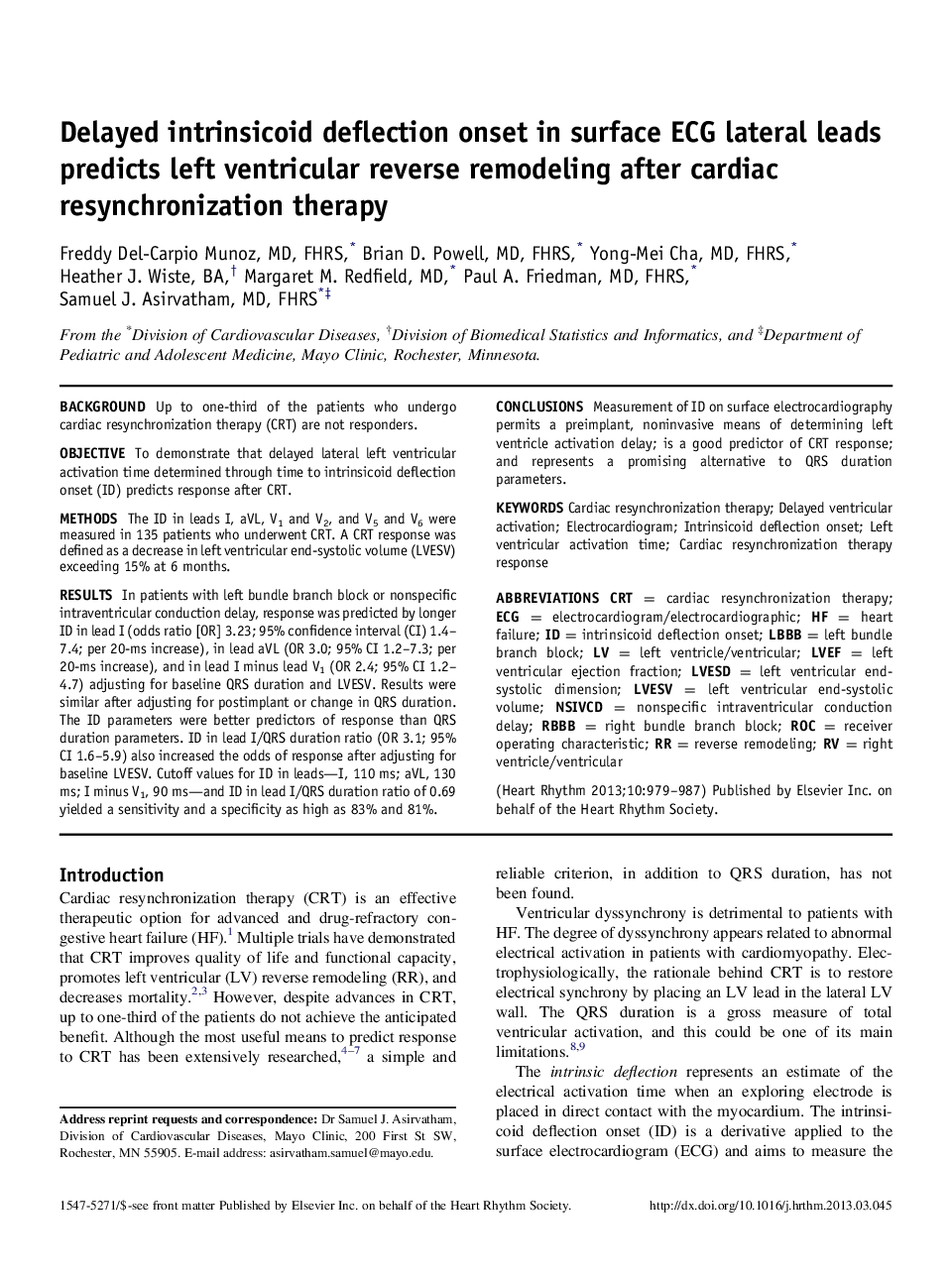| کد مقاله | کد نشریه | سال انتشار | مقاله انگلیسی | نسخه تمام متن |
|---|---|---|---|---|
| 2922265 | 1175841 | 2013 | 9 صفحه PDF | دانلود رایگان |

BackgroundUp to one-third of the patients who undergo cardiac resynchronization therapy (CRT) are not responders.ObjectiveTo demonstrate that delayed lateral left ventricular activation time determined through time to intrinsicoid deflection onset (ID) predicts response after CRT.MethodsThe ID in leads I, aVL, V1 and V2, and V5 and V6 were measured in 135 patients who underwent CRT. A CRT response was defined as a decrease in left ventricular end-systolic volume (LVESV) exceeding 15% at 6 months.ResultsIn patients with left bundle branch block or nonspecific intraventricular conduction delay, response was predicted by longer ID in lead I (odds ratio [OR] 3.23; 95% confidence interval (CI) 1.4–7.4; per 20-ms increase), in lead aVL (OR 3.0; 95% CI 1.2–7.3; per 20-ms increase), and in lead I minus lead V1 (OR 2.4; 95% CI 1.2–4.7) adjusting for baseline QRS duration and LVESV. Results were similar after adjusting for postimplant or change in QRS duration. The ID parameters were better predictors of response than QRS duration parameters. ID in lead I/QRS duration ratio (OR 3.1; 95% CI 1.6–5.9) also increased the odds of response after adjusting for baseline LVESV. Cutoff values for ID in leads—I, 110 ms; aVL, 130 ms; I minus V1, 90 ms—and ID in lead I/QRS duration ratio of 0.69 yielded a sensitivity and a specificity as high as 83% and 81%.ConclusionsMeasurement of ID on surface electrocardiography permits a preimplant, noninvasive means of determining left ventricle activation delay; is a good predictor of CRT response; and represents a promising alternative to QRS duration parameters.
Journal: Heart Rhythm - Volume 10, Issue 7, July 2013, Pages 979–987